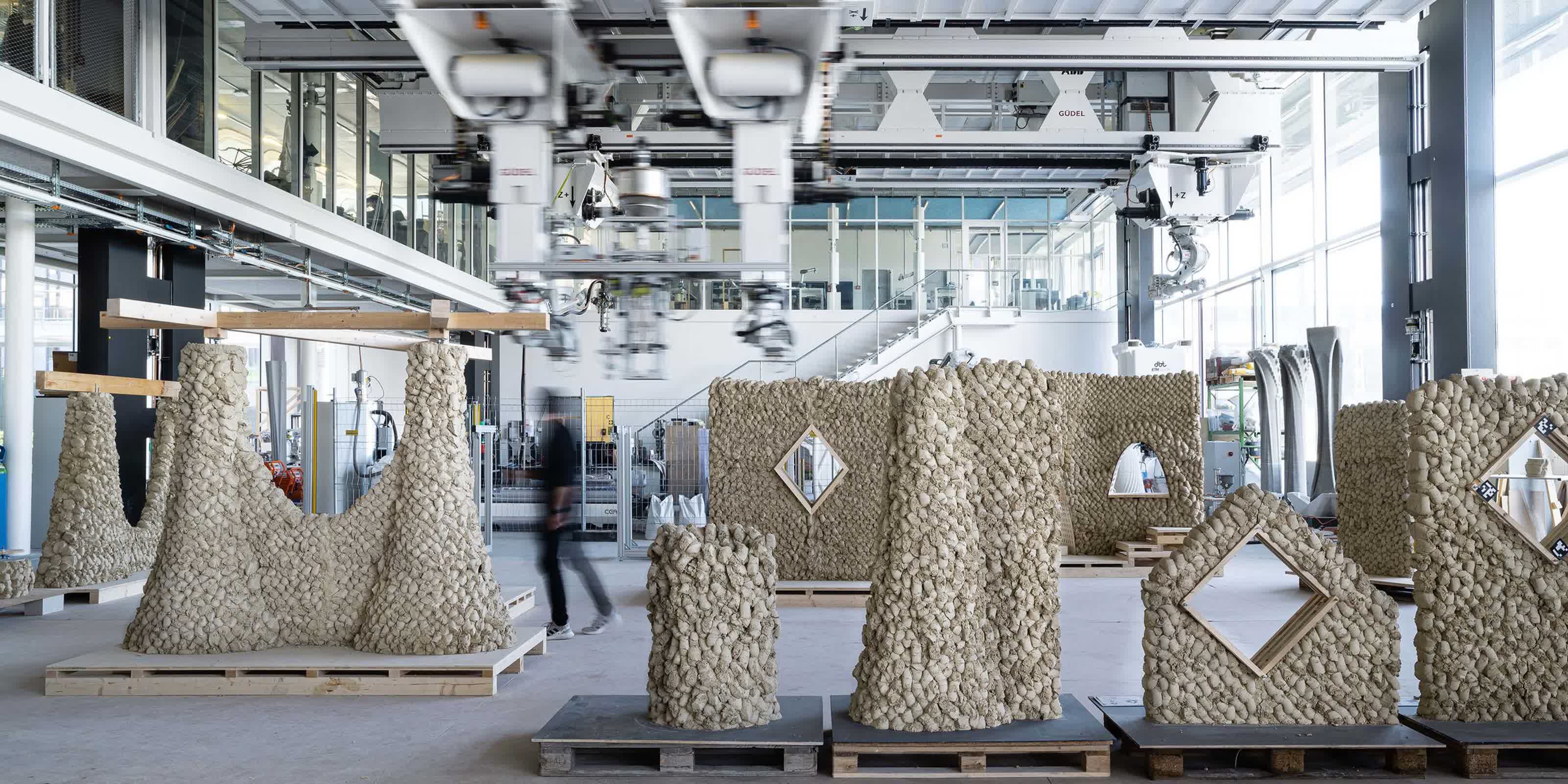In a nutshell: As the construction industry faces pressure to reduce its carbon footprint, developments like impact printing offer a solution. By harnessing abundant earth materials and advanced robotics, this method is more sustainable than traditional construction methods and even 3D printing.
Researchers at ETH Zurich have developed a robotic construction method called impact printing that is sustainable because it uses earth-based materials instead of cement.
Impact printing rapidly deposits small portions of a specially formulated earth mixture at high velocities. A custom-built robotic tool extrudes and shoots the material downward at up to 10 meters per second, gradually building up walls and structures. As each portion impacts the layers below, the material bonds strongly without requiring additional adhesives or drying time.
"We developed a robotic tool and a method that could take common material, which is the excavated material on construction sites, and turn it back into usable building products, at low cost and efficiently, with significantly less CO2 than existing industrialized building methods, including 3D printing," Dr. Lauren Vasey, project lead at ETH Zurich, told Ars Technica.
The earth mixture used in impact printing is composed primarily of locally sourced materials like excavated soil, silt, and clay – materials that can often be obtained directly from construction sites. Currently, only about 1-2 percent mineral stabilizer is required, which is far less than the cement content in conventional concrete.
A key advantage of impact printing over concrete 3D printing is that it does not require pauses for the material to solidify between layers, allowing for faster construction. The process is also highly customizable, enabling the production of freeform designs and complex geometries.
Perhaps more significantly, 3D printing in construction is not necessarily environmentally sustainable. The process often incorporates cement as a key ingredient, a significant contributor to global carbon emissions, accounting for a substantial portion of the world's CO2 output.
Furthermore, the additives used in 3D printing construction mixtures can complicate building end-of-life scenarios. These chemical components often make it difficult or impossible to recycle the materials once a structure is no longer needed.
The researchers have successfully used impact printing to construct walls and columns up to 2 meters (6.5 feet) tall. These structures can support significant loads without using chemical additives like cement for strength. The team is now working on integrating reinforcement methods to expand the types and scale of structures that can be built.
They envision impact printing being used for off-site prefabrication and on-site construction and have designed the system to be compatible with autonomous construction machines, including a custom excavator called HEAP developed by ETH's Robotic Systems Lab.
The researchers aim to refine the material mixture further to eliminate the need for additives, making the process fully circular. Structures built with impact printing could be deconstructed, and the materials could be reused for future buildings.
The impact printing technology has already garnered recognition, winning the 3D Pioneers Challenge in the Architecture category in 2023. The ETH Zurich team is now working to commercialize the process, with plans to establish a prefabrication facility in the coming year. They estimate that impact-printed building products could reach the market within three years.
